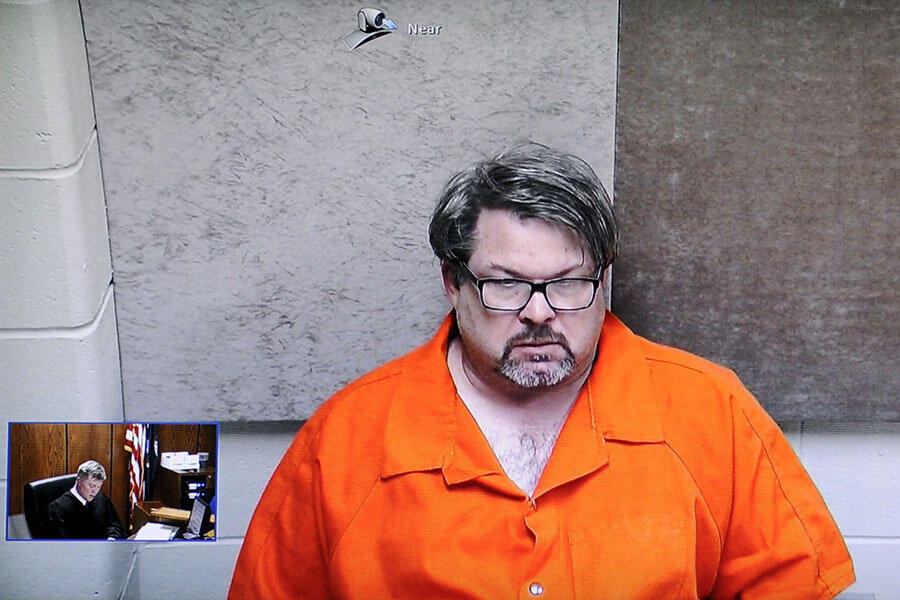In Kalamazoo mass shooting, no clear answer as to 'why?'
Loading...
Jason Brian Dalton did not speak at his arraignment Monday on charges of murdering six people in Kalamazoo, Mich., except to ask: “Can I prefer to remain silent?”
But it is possible that, even if he did speak, the vexing question of why he allegedly went on a shooting rampage this weekend might not be much clearer.
Perhaps it was the bad reviews he got as a driver for Uber. Perhaps it was the stress trying to make ends meet. Perhaps it was none of these things. Kalamazoo Public Safety Chief Jeff Hadley called the lack of a motive “baffling” Monday.
But it’s not unusual.
“What we’re always looking for in these cases is motive, and the truth is motive is elusive,” says Eugene O’Donnell, a lecturer at the City University of New York’s John Jay College of Criminal Justice. “When all is said and done, it’s pretty common to not have any clarity about why people are acting” like that.
According to the Federal Bureau of Investigation definition of a mass shooting – an incident in which four or more people are killed – this is the second of 2016. The first involved a domestic murder-suicide in Chesapeake, Va., on Jan. 27 that left six dead. There were 22 such shootings last year.
“It falls within what I would argue are the crucial characteristics of a public mass shooting,” says Deborah Azrael, director of research for the Harvard Injury Control Research Center.
There are few details on Dalton, but experts point to some elements of his backstory.
One of Mr. Dalton’s Uber customers told The New York Times that during a Feb. 14 ride, he told her, unsolicited, that he had only been working as an Uber driver “a day or two” and that “he had already gotten some bad reviews.”
“He said it was just drunk kids and his car messing up a little bit,” added the customer, Sara Reynolds, describing Dalton as “a little shy and awkward, but … pretty normal for the most part.”
He has no criminal record and passed an Uber background check prior to becoming a driver. He had worked for Progressive Insurance until mid-2011 as an insurance adjuster, according to news reports. He also taught an auto-repair class at an area community college, according to the Associated Press.
Married and a father of two, neighbors described him as quiet and polite in news reports, highlighting that he enjoyed playing with his kids and maintaining his cars and occasionally shot a gun out the back door of his house.
How these scraps of information relate, if at all, to the six murders is unclear, but experts say the shootings fit a larger pattern of men carrying out mass shootings.
“Most men are not violent, [but] most acts of violence are committed by men,” says Jon Davies, director of the McKenzie River Men’s Center in Eugene, Ore.
“There are different pressures on middle-aged men,” says Dr. Davies. “They expect more of themselves. He may have a job, but he might be struggling economically, so while he is supporting his basic needs, he feels like he may not be as far along as he wants to be.”
Economic uncertainty can fuel some of this anxiety, says Christopher Kilmartin, a professor of psychological science at the University of Mary Washington in Fredericksburg, Va.
“If you’re poor, and you don’t think you’re supposed to be poor because you’re a white man,” he adds, “you think it’s somebody else’s fault, then you go and act out aggressively.”
Kalamazoo’s economic picture is mixed. Its unemployment rate falls below the national average, but its poverty level falls above. In Kalamazoo County in 2014, 24 percent of all households were what used to be referred to as the working poor – above the poverty level, but below cost-of-living standards, according a study by Rutgers University in New Jersey. Another 17 percent fell below the poverty level, according to a story by the Kalamazoo Gazette. (The city has a large number of college students, which can cause those results to spike higher.)
On the plus side, unemployment in the area is at 3.5 percent, according to Charles Ballard, a professor of economics at Michigan State University, and Kalamazoo County had the 12th-highest per-capita income in the state in 2014.
“The Kalamazoo area is doing better than many areas in Michigan,” he adds. “If we’re searching for an explanation for the shooting over the weekend, I think we’d probably have to do more to look at the particulars of that particular individual rather than general economic malaise.”






